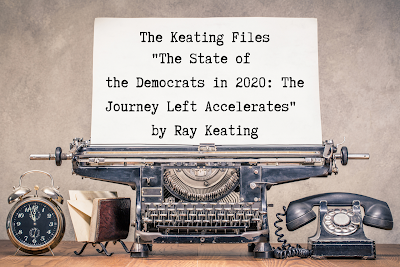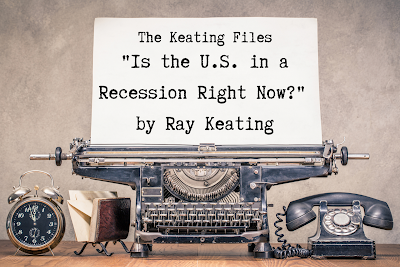by Ray Keating
The Keating Files – March 31, 2020
Coronavirus concerns continue to mount in terms of illnesses, deaths, and the economy. And unfortunately, it promises to get much worse, before it gets better.
As for those who have been touting this as not a big deal – you know, saying it’s not as bad as the flu, and/or asserting that U.S. businesses and the economy will get back to work in a couple of weeks – they’ve proven to be more grossly ill-informed than the rest of us who are trying to navigate these uncharted waters.
Some of the politics have reached new depths of, well, stupidity – and that’s saying something. It’s been sad to see so many people peddling the idea that the warnings about the coronavirus had nothing to do with science and the track record of the virus in other nations, but instead, claimed that it was some kind of political conspiracy. By the way, one almost has to admire the steadfastness among some of them, as they continue to make such bizarre claims even as the cases mount in the United States. (Geez, just how deep does this conspiracy run?)
Looking ahead, here are my 4 top concerns as an economist and a human being:
1) The top concern and priority – and the reason that so much of the economy has been shut down – remains working to limit and stop the spread of the coronavirus, and its impact in terms of those infected, the numbers needing hospitalization, and of course, the tragic deaths. If you’re not operating from that as a first principle, then there’s something wrong with you. Unfortunately, even as the virus continues to spread in the U.S., an assortment of commentators callously emphasize the need for businesses to re-open now and for people to get back to work immediately, with some even questioning why state and local government officials have taken the actions they have. Yes, there are concerns about what the government is doing, but those are legitimate worries over the longer haul – as I will note in a moment – not in terms of the largely necessary steps that have been taken so far in the name of saving lives.
2) As the coronavirus continues to spread across the globe, the broader move into developing countries could turn into something far worse than what’s been seen in assorted developed nations, given how weak – or nearly nonexistent – health care systems and services are in those countries. The work for all of us will not stop when matters are brought down to manageable levels in the U.S.
3) The immediate drop in the U.S. economy promises to be historic. The government’s call to shut down large swathes of economic activity was the right one, and the massive aid bill (CARES Act) that was passed by Congress and signed into law by President Trump was necessary (though certainly not everything in it was needed or even related to what’s going on) to limit some of the short-term pain. But the downturn in the economy that started in March promises to be historic, and likely will last at least into the third quarter of this year – no matter the short-run aid doled out by the government.
4) The same short-run aid provided by government will serve as a longer run negative for the economy. Anytime government drains resources from the private sector (as is the case with this massive federal package), whether via borrowing or taxes, it will serve as an economic negative. So, while the CARES Act will help many in the short run (assuming government executes matters quickly – a big assumption), the same measure promises to restrain on any economic recovery.
And the economic recovery/expansion that hopefully starts late this year or early next will be further hampered if the current expansion of government controls are not rolled back fully. The surest path to a slow recovery – or even a double-dip recession – would involve politicians feeling empowered to spend, regulate, borrow and tax more, along with the Fed continuing to believe in its nonexistent ability to manage the economy. That’s a recipe for long-run economic decline. Indeed, this very phenomenon coming out of the late-2007-to-mid-2009 recession meant that the subsequent recovery/expansion period turned out to be grossly under-performing in terms of economic growth.
Our focus currently needs to be on saving lives, and when things are under control at home, helping those in other countries. This is what the United States does. That’s all vital from a love-our-fellow-man perspective, as well as, secondarily so, an economic viewpoint. Looking a bit further down the road, our humanitarian and economic concerns further coalesce in that we need government to then step back, and allow the private sector to invest, recover and grow, and trade to flourish – thereby creating businesses and jobs, driving up incomes, and creating the wealth that will allow us to aid others around the world and be better prepared for future crises.
__________
Ray Keating is a columnist, an economist, a novelist (his latest novels are The Traitor: A Pastor Stephen Grant Novel, which is the 12thbook in the series, and the second edition of Root of All Evil? A Pastor Stephen Grant Novel with a new Author Introduction), a nonfiction author (among his recent works is Free Trade Rocks! 10 Points on International Trade Everyone Should Know), a podcaster, and an entrepreneur. You can also order his forthcoming book Behind Enemy Lines: Conservative Communiques from Left-Wing New York– signed books or for the Kindle. The views expressed here are his own.








